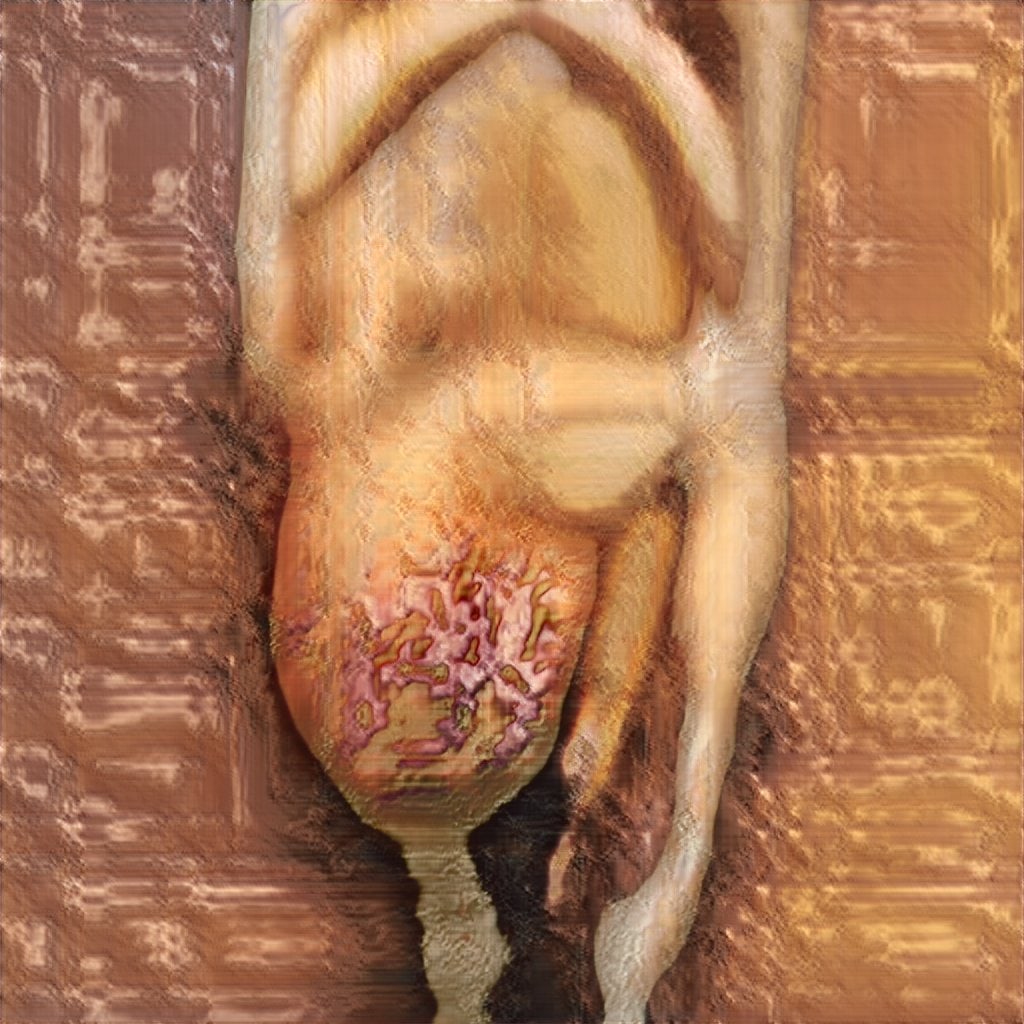With all the developments in AI art in the last year taking up so much of the public awareness, it can be easy to forget that the movement has roots that reach back far before Stable Diffusion or Midjourney arrived on the scene. Robbie Barrat, for example, is a household name in the artificial intelligence and generative art universe and also represents an important part of crypto art history.
Having experimented with machine learning and GANs (generative adversarial networks) since 2018, Barrat’s early explorations led him to produce a series of 300 AI-generated nude art portraits that have since become some of the most sought-after crypto art in existence.
Recently, Barrat’s AI Generated Nude Portrait #7 Frame #111 sold for 175 ETH ($343,761). The sale has incurred criticism largely from the anti-AI art crowd, who claim the artwork is ugly, and yet another example of unimaginative art spit out from an unfeeling algorithm. However, such faultfinding glazes over much of Barrat’s artistic vision and the cultural importance of the work and its origin. Whether you’re a critic or supporter of Barrat’s work, both are worth a close look.
The Lost Robbies
The reason for the legacy status of those 300 nude portraits goes beyond the innovative approach that Barrat used in their creation. In the summer of 2018, Christie’s hosted its first-ever Tech Summit in London, shortly after the NFT marketplace SuperRare had launched. The world of tokenized digital art had barely made a blip of an appearance in the general public’s consciousness at this time, and SuperRare was encouraged by the auction house to contribute to the event attendees’ gift bags.
They partnered with and enlisted Barrat, who was the first artist to tokenize art on the platform, and Jason Bailey, its first collector, to create artwork consisting of 300 frames that could be minted and given away to people at the event. Thus, AI Generated Nude Portrait #7 was born, consisting of 300 unique images in layers, which, when put on top of each other, would present the viewer with the completed piece. The works were added to ETH gift cards that recipients could later redeem for the 1/1 token.

But few redeemed their gift cards over the years, meaning many of the pieces were lost. Appropriately, the pieces in the collection simply became known as The Lost Robbies. To this day, only 46 of the generative nude portraits can be found on Barrat’s SuperRare page.
A few months after Christie’s tech summit, Barrat’s code was used by the French artist trio Obvious to make Portrait of Edmond Belamy, which sold at a Christie’s auction for $432,500. It was the first AI-generated artwork sold by the legacy auction house, and though Barrat received no initial credit or compensation for the work, the sale put Barrat on the art world’s radar.
Combined with The Lost Robbies’ origin story and subsequent rarity, the pieces that did emerge from the original group of 300 ended up selling for as much as $1 million. Legacy auction house Sotheby’s even wrote of Barrat’s Portrait #7 Frame #64, which sold in March of 2022 for over $800,000, that it was symbolic of a singular moment in time in which a pre-pandemic shift in the art world “catapulted digital art into the world’s cultural and economic psyche.”
Aesthetics, narrative, and everything in between
Abstract art is perennially subject to pointed condemnation, especially if it brings a high price tag. Barrat’s AI nude portraits, AI Generated Nude Portrait #7 Frame #111 in particular, are no different. The piece has been referred to as “repulsive,” reminiscent of a “dead deer,” and everything in between, but ridicule over the artwork’s appearance is the less important issue at play here. Great art doesn’t have to look pretty, even if all members of society could agree on just what pretty is or means, which is itself a fool’s errand.
The crucial matter is how the sale of this piece of AI artwork has incurred the logically inconsistent wrath of the movement’s detractors. On the one hand, AI art critics often claim that art created with the technology can never truly be art — even if it’s aesthetically pleasing — precisely because of the lack of human narrative behind it, whether that narrative is bound up in an artist’s journey or their skill. This argument has several holes, but it stumbles the most when placed next to another common complaint, often lobbed by the same AI reactionaries, which asserts that the art lacks a human warmth in its aesthetic. The double-think is immediately apparent,
Nor has the crypto art community taken kindly to the scathing comments directed at what it sees as a seminal piece of art history that preceded the inventive, era-defining art movement that they’ve come to know and love.
Ultimately, trying to understand the value of AI art is no different than trying to understand the value of art made in any other medium and with any other toolset, an interrogation that returns both immediate and elusive answers. Barrat’s nude portraits not only represent a moment along the timeline in the evolution of digital and AI art, but their narrative is also so compelling as to be as tangible and present as the flesh and blood the portraits themselves abstractly depict.
It may be difficult to put a price tag on history, but the sale of AI Generated Nude Portrait #7 Frame #111, along with every other piece in The Lost Robbies, is a manifestation of people’s attempt to give history its due. We shouldn’t begrudge people for trying.


